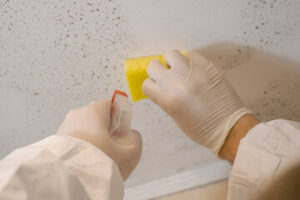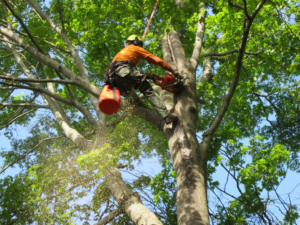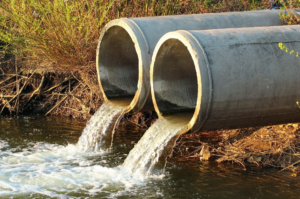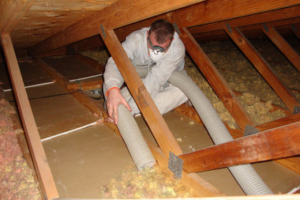Disasters like floods, storms, earthquakes, fires and mudslides can cause a lot of damage. In addition to the physical destruction, they can also cause emotional distress.

Utah Disaster Cleanup is a complex job that requires the services of professionals. It is a process that involves safety protocols, inspection, removal of debris, and restoration of damaged areas.
Disasters like earthquakes, hurricanes, tornadoes, floods, fires, mudslides and snowstorms can cause severe damage to homes and businesses. Disaster cleanup involves assessing the damages, prioritizing clean-up tasks and engaging professional services for specialized help. The process is labor-intensive, time consuming and often dangerous. It requires special training and skills to safely perform cleanup work.
Performing disaster cleanup involves working in a variety of environments with hazardous conditions, including flooding, toxic fumes, contaminated floodwater, displaced occupants, downed power lines and unstable buildings. This kind of environment can expose people to numerous health hazards and risks, including carbon monoxide poisoning, mold, confined spaces, and poor air quality. Disaster cleanup workers should also wear proper clothing and personal protective equipment, such as respirators, gloves, long pants, safety glasses, and hard hats. They should also carry a first-aid kit to address any minor injuries that may occur.
A comprehensive plan for disaster cleanup must be drafted and made available to employees. It must include the titles and functions of individual team members along with their contact information. It must also include a list of critical functions to be completed during the salvage operation. The plan should also identify the methods for contacting team members and alternates, vendors, support agencies, suppliers, consultants and all those with whom special disaster contracts and agreements are in effect.
Swift disaster cleanup minimizes the emotional impact on occupants, reduces restoration costs and protects valuable belongings. It also helps prevent further damage by addressing water and structural issues quickly. In water-damaged areas, for example, delayed response can lead to the growth of mold within 48 hours, making further restoration more difficult and expensive.
Disasters generate tons of debris, including building rubble, soil and sediments, green waste, discarded materials from rescued and restored items, personal property and ash and charred wood. It is important to properly manage this waste by recycling or disposing of it in sanitary landfills. It is illegal to dispose of disaster debris in open fields or dumps, as this can pollute water, soil and groundwater. Moreover, burning is not permitted because it creates noxious gases that are harmful to the environment.
Inspection
NFR’s disaster inspection services help property owners, insurers, and governmental agencies formulate effective recovery plans. Through thorough assessments and accurate documentation, NFR assists in ensuring fair compensation for loss and expediting the insurance claim process.
Homeowners must ensure that local officials have declared their neighborhoods safe to re-enter before attempting to enter damaged homes. They should also carefully examine the structure for safety hazards, including loose power lines, live wires, structural damage, and chemical spills. Moreover, they should document the loss of personal possessions and keep receipts for all expenses related to cleaning up or repairing their homes.
During the inspection, a FEMA inspector will review all disaster-related items, verifying the cost to replace and/or repair. They will also evaluate the condition of the roof, foundation, interior and exterior walls, and electrical systems. Additionally, they will examine for water damage caused by firefighting, and use tools such as moisture meters and thermal imaging cameras to find hidden damage that may be hidden behind wall studs or beneath floorboards.
The inspector will also ask survivors to present proof of occupancy and ownership of the home, such as a utility bill, driver’s license, bank statement or medical provider’s bill in the applicant’s name. Applicants must be prepared to answer questions about their losses and provide details on serious needs such as clothing, food, shelter, medical supplies, and school or work uniforms. Children should not be present during the inspection if possible, as seeing the damage could upset them and cause long-term effects such as nightmares.
Removal of Debris
Debris removal is one of the biggest expenses incurred after disasters. According to Insurance Adjusters International, it accounts for 27% of the total cost of recovery from major catastrophes and natural disasters. It is also one of the most dangerous and time-consuming tasks involved in disaster recovery. In addition to its sheer volume and complexity, debris poses significant safety risks to residents and emergency responders. Sharp objects, unstable structures, and contaminated materials pose hazards that can cause injuries or delay relief efforts. It also obstructs transportation networks, hindering the delivery of essential supplies and services.
When debris is left unattended, it can lead to extensive damage to buildings and their contents, which may require costly repairs and restoration. Disaster cleanup experts can minimize this damage and save homeowners and business owners money by addressing debris as soon as possible. They can even offer content cleaning and restoration to salvage cherished belongings.
The process of removing debris from the scene of a disaster can be done manually or using specialized equipment. Manual methods involve the use of shovels and rakes to collect and remove waste material. This method is especially useful when the debris is located in an area that cannot be easily reached with heavy equipment. It can also be used when a particular type of debris is too hazardous or dangerous to handle.
In the case of a large disaster, such as a hurricane, local governments and federal agencies play key roles in coordinating debris removal operations. In addition to providing the necessary resources and equipment, they also work closely with specialized debris removal companies and contractors. This collaboration ensures that all areas are covered and that the most efficient methods are employed.
Debris removal requires careful planning and coordination to avoid disruptions to traffic, infrastructure, and public safety. Prior to commencing debris removal, the site should be carefully surveyed and engineered to facilitate safe maneuvering and operation of machinery. In addition, grading of the site may be required to prevent runoff of contaminants. Advance consideration of the site engineering and layout will also help reduce delays in implementing debris removal activities.
Documentation
Documentation is the key to effective disaster recovery. A disaster recovery plan should address all content and related workflows, so that employees can continue operations without disruption in the event of a fire, data loss or breach, power outage, sewage spill, or even a natural disaster such as an earthquake.
Disaster debris management plans are an essential tool for reducing the amount of PCB-containing debris disposed of in landfills after large-scale events such as hurricanes, tornadoes, floods, wildfires, and winter storms. This guide covers the essential steps of disaster debris management, including inspection, assessment, and removal. It also discusses the importance of creating a plan for managing debris and highlights best practices for boosting the effectiveness of your disaster debris management program.
An effective document disaster recovery plan should be a living document that is regularly updated and tested. It should also include templates for capturing important organizational information, such as contact lists and corresponding notification calling trees. The document should also include a system of prioritizing systems for restoration based on their criticality to the organization and its constituents.
In addition, the document should provide a timeline for testing and recovery of critical documents, as well as the procedures to follow in the event of a disaster. A written authorization statement from management should be included, so that any deviations from the original plan can be quickly identified and remedied. It is also helpful to include a list of third-party contractors and an outline for how they will be engaged in the recovery process.








